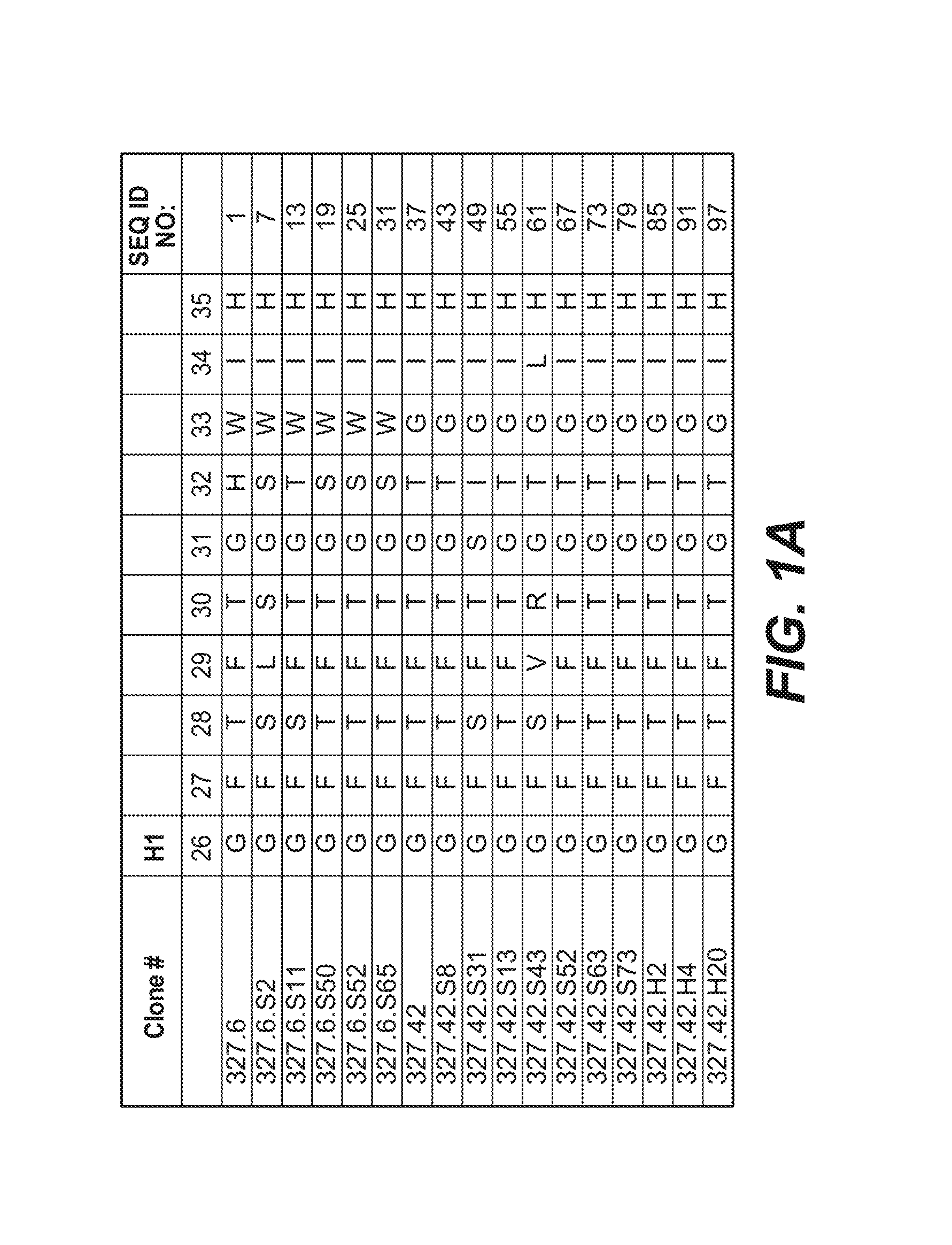Invented by Lin Pei, Yan Wu, Xiaofen Ye, Genentech Inc
The market for anti-axl antibodies is growing rapidly, as more and more cancer patients are turning to this type of treatment. In fact, the global market for anti-axl antibodies is expected to reach $1.2 billion by 2025, according to a report by Grand View Research.
There are several different methods of using anti-axl antibodies in the treatment of cancer. One of the most common methods is through the use of monoclonal antibodies. These are antibodies that are designed to target a specific protein, such as Axl. Monoclonal antibodies can be used alone or in combination with other cancer treatments, such as chemotherapy or radiation therapy.
Another method of using anti-axl antibodies is through the use of bispecific antibodies. These are antibodies that are designed to target two different proteins at the same time. Bispecific antibodies can be used to target Axl and another protein that is found on the surface of cancer cells, such as HER2.
In addition to these methods, there are also several different types of anti-axl antibodies that are currently being developed. These include antibody-drug conjugates, which are antibodies that are linked to a chemotherapy drug. This allows the antibody to target cancer cells and deliver the chemotherapy drug directly to the cancer cells.
Overall, the market for anti-axl antibodies is expected to continue to grow in the coming years. As more research is conducted on these antibodies and their effectiveness in the treatment of cancer, it is likely that they will become an increasingly important part of cancer treatment.
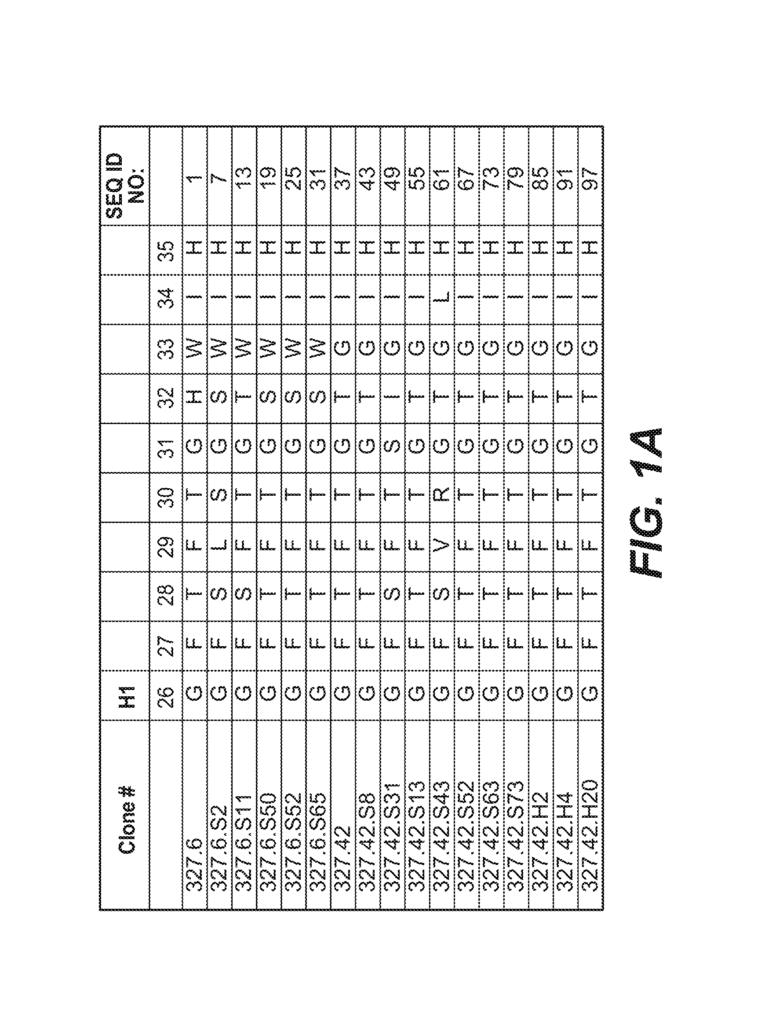
The Genentech Inc invention works as follows
The invention provides anti-Axl antibody and methods for using them.
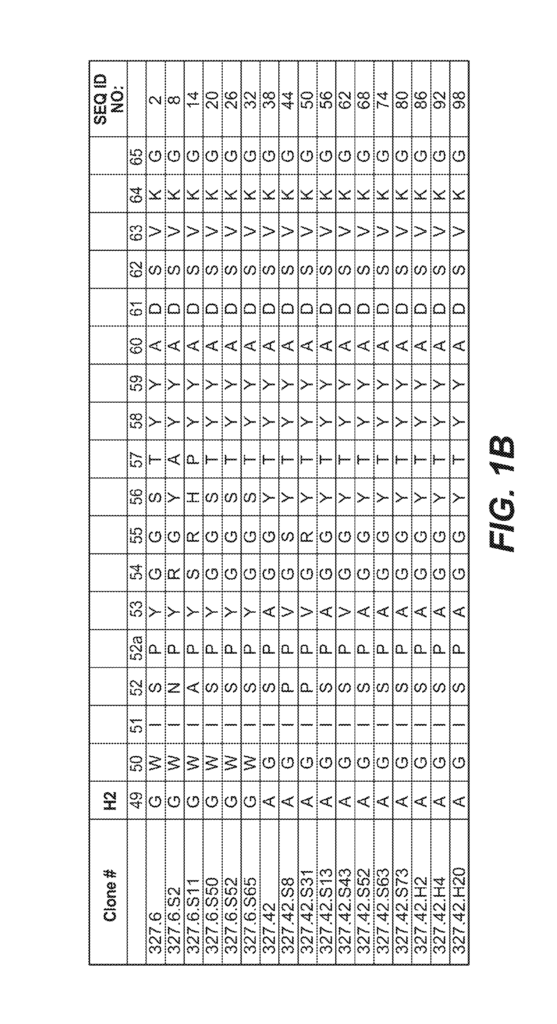
Background for Anti-axl antibodies, and their methods of usage
Axl belongs to the TAM family (Tyro3, Axl and Mer) of receptor tyrosine-kinases” (O’Bryan, Lai, and others, 1991). It was initially identified as a gene that transforms hematological cancers (O’Bryan, 1991; Janssen, 1991). Axl dysregulation or the ligand Gas6 are implicated in a number of human cancers. Axl has been overexpressed in many human cancers including lung, prostate, breast, gastric, pancreatic, and renal cell carcinomas. Recent profiling of phosphotyrosine signals revealed that activated Axl was present in about 5% of primary NSCLC tumors (Rikova and al., 2007). Axl is expressed by chemotherapy and targeted drugs. This expression confers resistance against chemotherapy in acute leukemia and gastrointestinal tumors. Other publications on Axl and anti Axl antibodies are WO2004/039955; WO2009/063965, co-owned U.S. Application No. 61/228.915 filed July. 27, 2009; WO2009/062690; WO2004/008147; U.S. Pat. No. 5,468,634.
It is evident that there will continue to be a demand for agents with clinical attributes that make them ideal for use as therapeutic agents. This invention provides benefits and meets the need.
All references, including publications and patent applications, are incorporated in their entirety by reference.
The invention provides anti-Axl antibody and methods for using them.
The invention, in one aspect, provides an isolated anti-human Axl antibody, with an affinity between?600 pM and?1nM. In certain embodiments, an antibody is used to promote Axl receptor downregulation. In certain embodiments, an antibody inhibits constitutive Axl activity. In certain embodiments, an antibody binds to a polypeptide containing, essentially comprising or consisting of amino acids in the sequence:
(SEQ?ID?NO:?111)\nMAWRCPRMGRVPLAWCLALCGWACMAPRGTQAEESPFVGNPGNITGARGL\nTGTLRCQLQVQGEPPEVHWLRDGQILELADSTQTQVPLGEDEQDDWIVVS\nQLRITSLQLSDTGQYQCLVFLGHQTFVSQPGYVG.
In further embodiments the antibody is monoclonal. In certain embodiments, an antibody that is human, humanized or chimeric may be used. In some embodiments the antibody is an antibody fragment which binds to Axl. In some embodiments the antibody is human antibody.
In one aspect, the invention provides an anti-Axl antibody, wherein the antibody comprises (a) HVR-H1 comprising GFX1X2X3X4X5X6X7H, wherein X1 is S or T; X2 is L, F or V; X3 is S, T, or R; X4 is G or S; X5 is S, H, T or I; X6 is W or G; X7 is I or L (SEQ ID NO:112), (b) HVR-H2 comprising X1X2IX3PX4X5X6X7X8YYADSVKG, wherein X1 is G or A; X2 is W or G; X3 is N, S, A or P; X4 is Y, A or V; X5 is R, G, or S; X6 is G R or S; X7 is Y, S, H or Y; X8 is A, T, or P (SEQ ID NO:113) and/or HVR-H2 comprising X1X2IX3PX4X5X6X7X8X9X10YYADSVKG, wherein X1 is G or A; X2 is W or G; X3 is N, S, A or P; X4 is Y, A or V; X5 is R, G, or S; X6 is G R or S; X7 is Y, S, H or Y; X8 is A, T, or P; X9 is any amino acid or absent; X10 is any amino acid or absent (SEQ ID NO:166); (c) HVR-H3 comprising ARX1X2X3X4X5X6X7X8X9X10X11X12X13MDY, wherein X1 is E or W; X2 is Y or R; X3 is S, N or P; X4 is G, D, or L; X5 is W or S; X6 is G, R, A, or S; X7 is G or S; X8 is S or absent; X9 is S, Y or absent; X10 is V, I or absent; X11 is G or absent; X12 is Y or absent; X13 is A, E or absent (SEQ ID NO:114); (d) HVR-L1 comprising RASQX1X2X3X4X5X6A, wherein X1 is D, I or S; X2 is V or I; X3 is S, G or R; X4 is T, I, N or R; X5 is A or S; X6 is V or L (SEQ ID NO:115); (e) HVR-L2 comprising X1ASX2LX3S, wherein X1 is S, A, or V; X2 is F, N or S; X3 is Y or A (SEQ ID NO:116); and (f) HVR-L3 comprising QQX1X2X3X4X5X6T, wherein X1 is S or A; X2 is Y, K or N; X3 is T, S, Y, M, R or A; X4 is T, N, S, or F; X5 is P or R; X6 is P, Y, S or L (SEQ ID NO:117).
In another aspect, the invention provides an anti-Axl antibody wherein the antibody comprises (a) HVR-H1 comprising GFX1X2X3GX4WIH, wherein X1 is T or S, X2 is F or L, X3 is T or S, X4 is H, S or T (SEQ ID NO:118); (b) HVR-H2 comprising GWIX1PYX2X3X4X5YYADSVKG, wherein X1 is S, N or A; X2 is G, R or S; X3 is G or R; X4 is S, Y or H; X5 is T, A or P (SEQ ID NO:119); (c) HVR-H3 comprising AREYX1X2WX3X4SX5X6GYX7MDY, wherein X1 is S, N or P; X2 is G or D; X3 is G, R, or A; X4 is G or S; X5 is S or Y; X6 is V or I; X7 is A or E (SEQ ID NO:120); and (d) HVR-L3 comprising QQSYX1X2X3X4T, wherein X1 is T, S or Y; X2 is T, N, S or F; X3 is P or R; X4 is P, Y or S (SEQ ID NO:121).
The invention also provides anti-Axl antibodies that include (a) the amino-acid sequence SEQ NO:9 in HVR H3, (b) the sequence SEQ NO:12 in HVR L3, and (c), the sequence SEQ NO:8 in HVR H2.
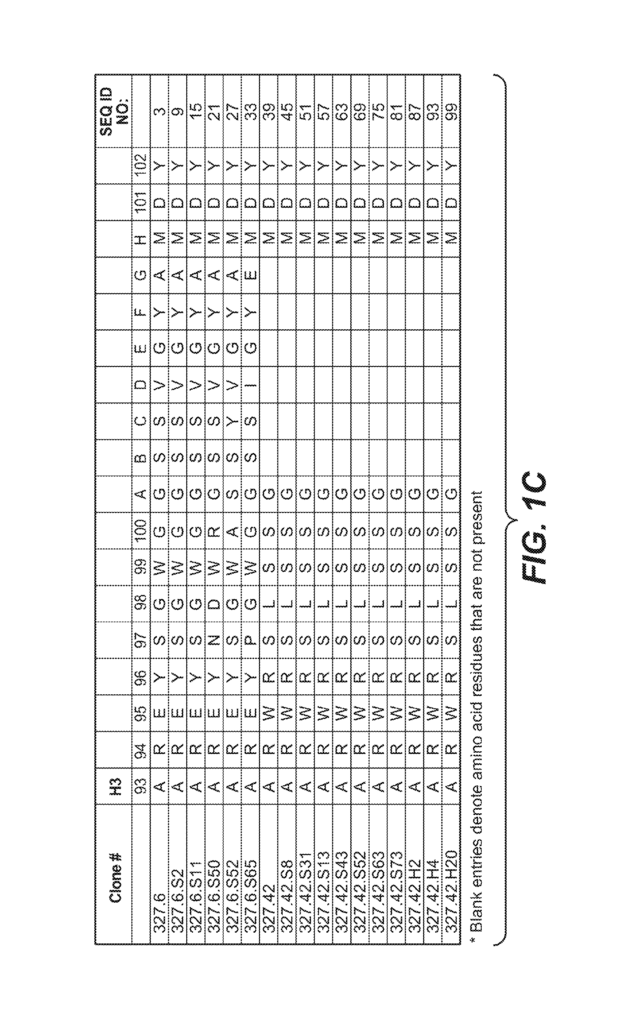
The invention also provides anti-Axl antibodies that include (a) HVRH1 which contains the amino acids sequence of SEQID NO:7 (b) HVRH2 which contains the amino acids sequence ofSEQID NO:8 (c) and HVRH3 which comprises the amino acids sequence ofSEQID NO:9.
The invention also provides anti-Axl antibodies that include (a) HVRL1 which contains the amino acids sequence of SEQ NO:10, (b) HVRL2 which contains the amino acids sequence ofSEQ NO:11 and (c)HVRL3 which comprises the amino acids sequence ofSEQ NO:12.
The invention also provides anti-Axl antibodies that include (a) HVRL1 which contains the amino acids sequence of SEQ NO:10, (b) HVRL2 which contains the amino acids sequence ofSEQ NO:11 and (c)HVRL3 which comprises the amino acids sequence ofSEQ NO:12.
In some embodiments the antibody also contains a framework sequence of heavy chain variable or light chain variables domains as shown in FIG. “In some embodiments, the antibody further comprises a heavy chain variable domain or light chain variable domain framework sequence shown in FIG.
In one aspect of the invention, an anti-Axl antibodies is provided that contains (a), a VH containing at least a 95% sequence similarity to the amino acids sequence of SEQ NO:103 (b), a VL containing at least a 95% sequence similarity to the amino acids sequence of SEQ NO:104 (c) or a VH containing the same as (a) but a VL containing the same as (b). In certain embodiments, an antibody contains a VH of SEQ NO:103. In some embodiments the antibody contains a VL of SEQ NO:104. In some embodiments the antibody contains a sequence VH of SEQ NO:103, and a sequence VL of SEQ NO:104.
In some embodiments the antibody is an IgG1 full-length antibody.
The invention also provides isolated RNA encoding antibodies of the invention.
The invention also provides host cell containing the nucleic acid of the invention.
The invention also includes methods for producing an antibody, which include culturing host cells of the invention to produce the antibody. In certain embodiments, these methods also include recovering the antibody from host cells.
The invention also provides an immuneconjugate containing any of the anti Axl antibodies in the invention, and a toxic agent.
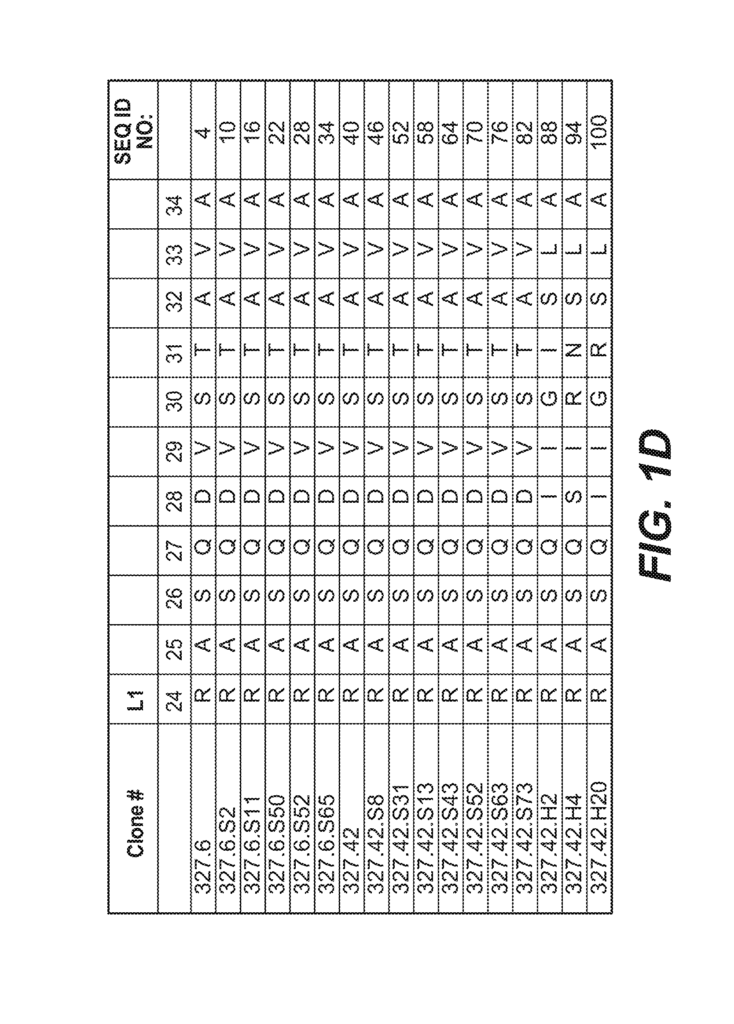
The invention provides an avpharmaceutical composition comprising any anti-Axl antibody of the invention, and a pharmaceutically accept carrier. In some embodiments the pharmaceutical formulation also includes an additional therapeutic agent. The additional therapeutic agent can be selected from a VEGF inhibitor, an EGFR inhibitor, or a chemotherapeutic.
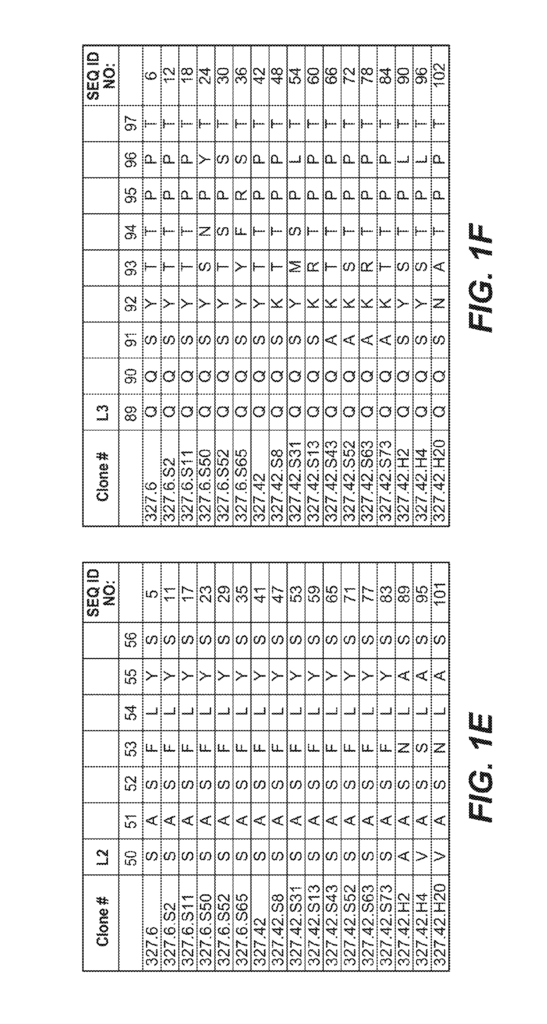
Click here to view the patent on Google Patents.
